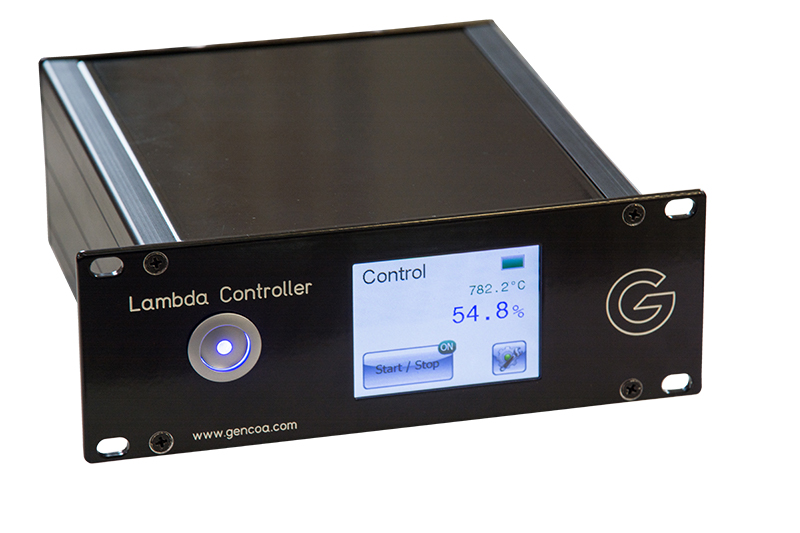VACGAS-G16
The Gencoa VACGAS-G16 sensing unit provides an industrially robust means to sense elements of group 16 - The Chalcogens. The important species in group 16 from a vacuum processing point of view are oxygen, sulphur and selenium.
The sensing method uses a zirconium oxide ceramic (zirconia - lambda sensor) and is based on a solid-state electrochemical fuel cell called the Nernst cell. Its two electrodes provide an output voltage corresponding to the quantity of gas in the vacuum relative to that in atmosphere. The VACGAS-G16 combines fast feedback control of the sensor temperature with gas correction to provide the O2 level as a precise partial pressure.
The basic technique is used in automotive engines to sample oxygen levels and ensure efficient combustion. Whilst Lambda sensors have been employed for many years to sense oxygen in vacuum, the speed and accuracy of the signal has not been as good as optical and mass spectrometry methods. The GENCOA VACGAS-G16 matches the gas outputs from RGA and optical spectrum methods with better sensitivity compared to differentially pumped RGA’s (less noise).
This signal accuracy is combined with the inherent robustness and low cost of the method when compared with other vacuum gas sensors. The sensor head has an infinite life and the control ensures signal stability and accuracy. The sensor can be located on the chamber wall (KF40 as standard), or inserted into the vacuum chamber as part of a sealed assembly. There are no sensitive electronics, hence the sensor won’t fail.
The limitations of the Nernst Cell means that for a large gas change, it can take 5 seconds to respond to the ultimate signal level, which compares to 3 seconds for a differentially pumped RGA. Optical methods based upon OPTIX are much faster (see below), 0.1 to 2 sec depending upon integration time.







